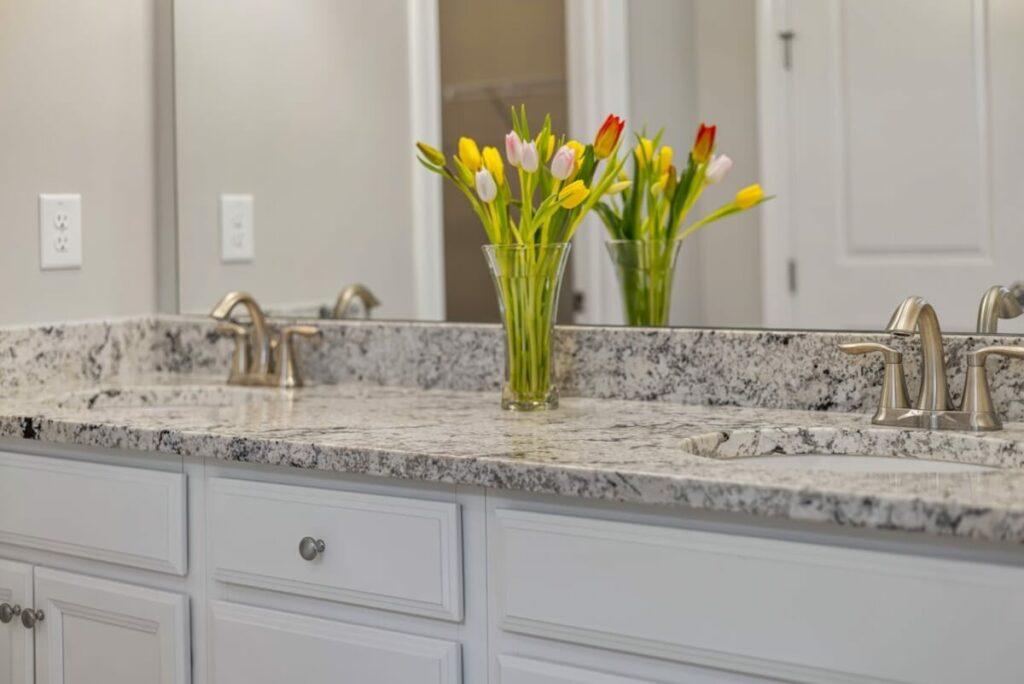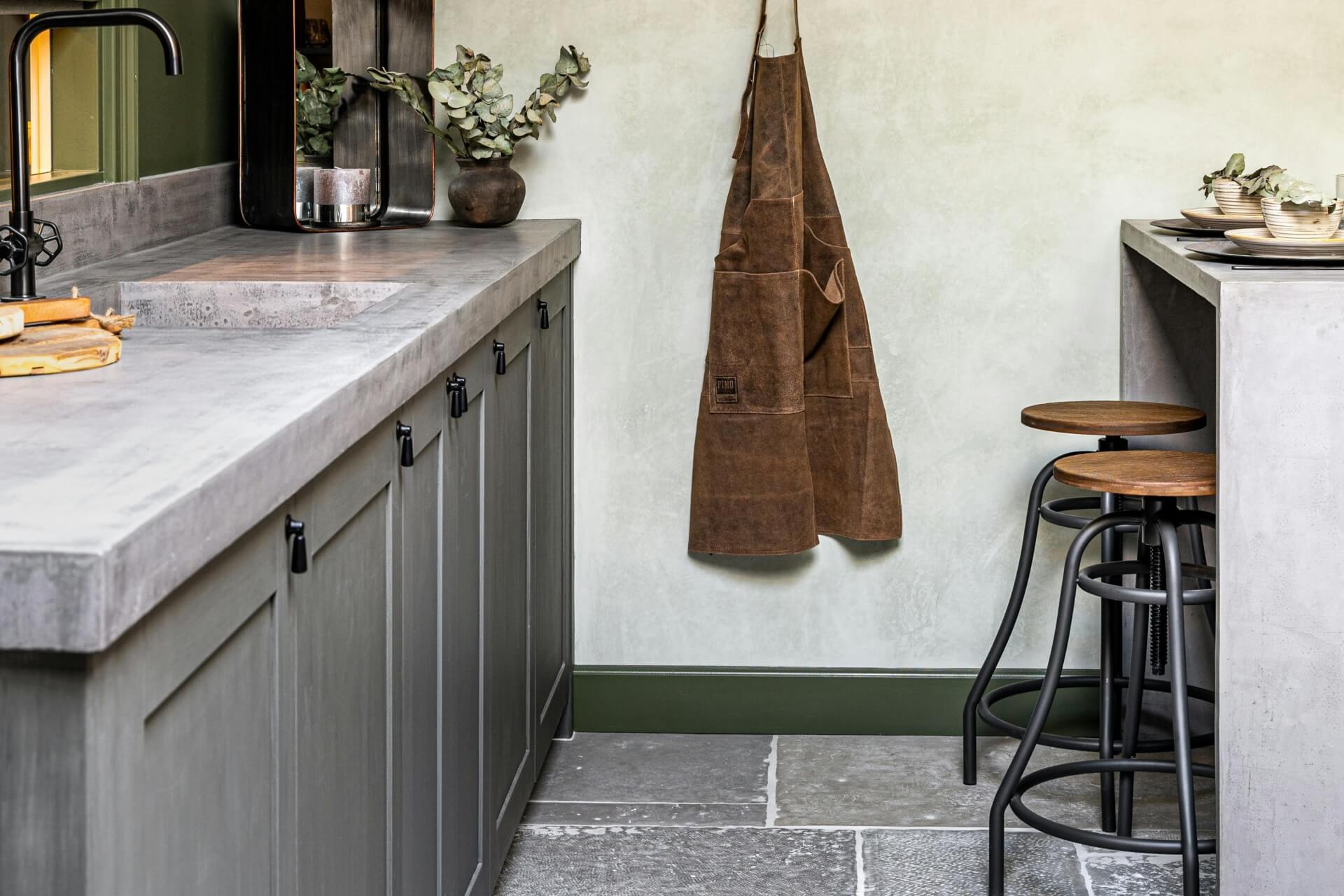Granite, basalt, slate, and other acid-resistant stones are built for durability. They’re dense, hard, and naturally less porous than softer stones like marble or limestone. That’s why you’ll find them everywhere, from busy hotel lobbies and family kitchens to outdoor patios and entryways.
But even strong materials need careful maintenance. While these stones can withstand acids that would etch marble in seconds, they’re not invincible. Every day, residues, limescale, rust, and oil can all leave marks if they’re not cleaned correctly. The good news? With the right cleaners and a little chemistry knowledge, stains on acid-resistant stone are rarely permanent.
What Makes a Stone “Acid-Resistant”?
Not all natural stones react the same way to acids; it depends on what they’re made of. Stones like granite, basalt and quartzite are rich in silicate minerals such as quartz and feldspar, which are chemically stable and don’t react with mild acids. That’s what makes them acid-resistant, and why products like DETERDEK can safely remove mineral build-ups or construction residues without etching the surface.
However, “acid-resistant” doesn’t mean “acid-proof.” Strong or undiluted acids can still dull the finish or damage sealers if left too long, so always test first and follow dilution guidelines. By contrast, marble, limestone, and travertine contain calcite, a mineral that reacts instantly with acid. Even something as mild as lemon juice can leave a mark, whereas granite would stay unaffected.
Understanding this distinction helps contractors match each surface with the right product, ensuring effective cleaning without damage.
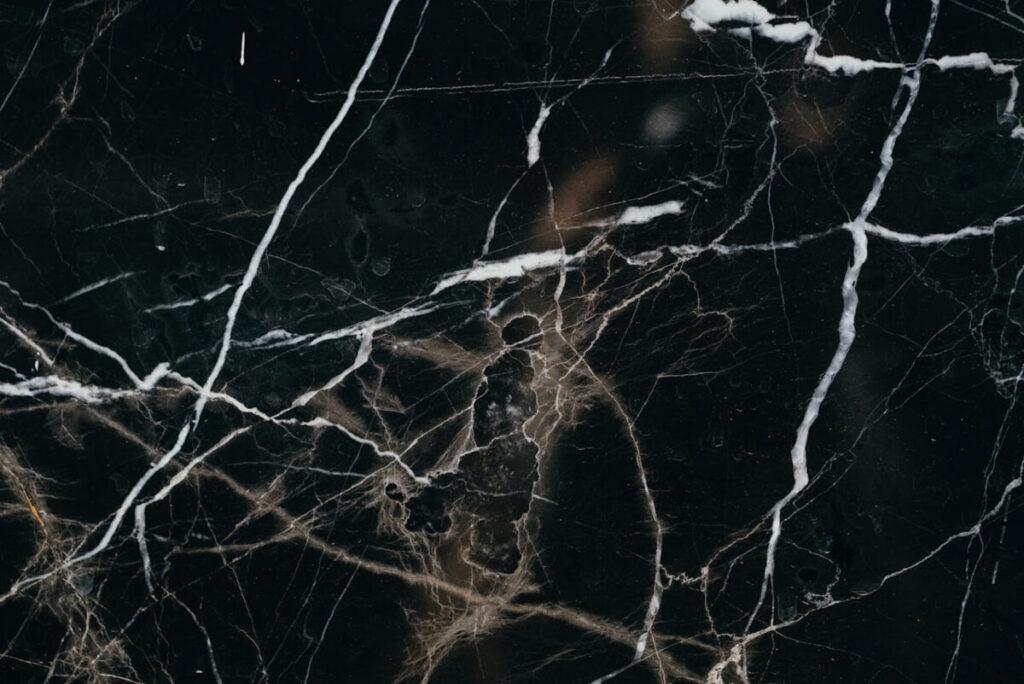
From Neutral to Acidic: Matching the Cleaner to the Job
Now that we know what makes a stone acid-resistant, the next step is keeping it looking its best. The right cleaner really depends on two things: what kind of dirt or stain you’re dealing with, and how the product itself is formulated.
FILA’s approach covers it all. The system works across the full pH range — starting with gentle, neutral cleaners for everyday care, moving to alkaline formulas for grease or organic marks, and finishing with acid-based options when you need to tackle mineral build-up.
Routine Cleaning
Even the hardest surfaces benefit from gentle, regular care. CLEANALL is FILA’s go-to neutral cleaner for day-to-day maintenance across ceramics, porcelain, LVT, and concrete, and it’s just as effective on sealed granite or slate.
When diluted 1:200, it lifts everyday dust, light dirt, and footprints without leaving residue or film. On large projects, it can run through floor-cleaning machines for a streak-free finish. For tougher grime, contractors can increase the concentration to 1:30, scrub lightly, and rinse.
Routine use of a neutral cleaner helps prevent buildup that can eventually require harsher products. It’s the first line of defense before stains have a chance to set.
Clever Solutions for Organic Stains
Most stains that appear on granite, slate, or quartzite are organic, such as coffee rings on a countertop, greasy marks on a floor, or food spills left to sit overnight. These respond best to alkaline chemistry.
PS87 is the workhorse for this category. It’s a three-in-one cleaner, degreaser, and wax remover that tackles oils, grease, and other organic residues without harming the stone.
- Dilute 1:10 for general cleaning on honed or matte finishes.
- Dilute 1:20 for polished or highly honed stone.
On busy commercial jobs, restaurant kitchens, garages, outdoor pavers, PS87’s versatility and high coverage make it a reliable, cost-effective option.
For deep or stubborn stains, SR95 lifts marks like wine, coffee, or ink without dulling polished finishes. When it comes to oil or grease, NOSPOT does the heavy lifting: spray it on, let it dry, and wipe it away.
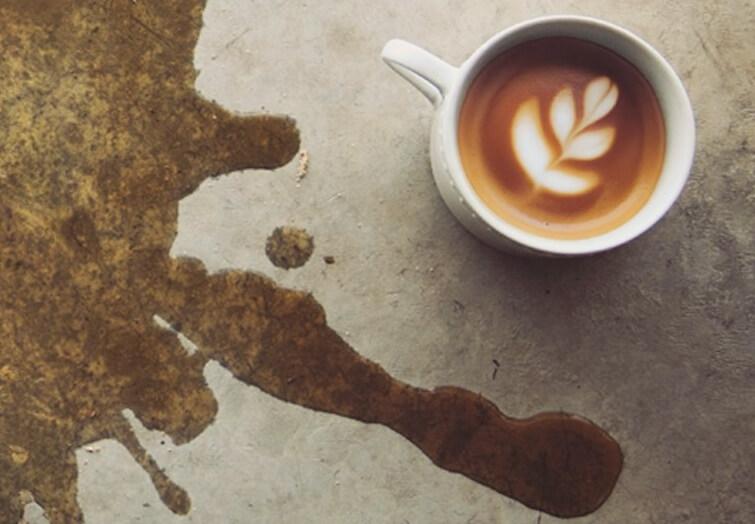
Acidic Cleaners for Inorganic Build-Up
Unlike marble, acid-resistant stones can handle controlled acid treatments. That makes DETERDEK one of the most effective cleaners in a contractor’s toolkit for tackling inorganic residues such as:
- Cement grout haze
- Efflorescence (white mineral deposits that appear on the surface)
- Limescale and hard-water buildup
- Rust traces
- Soap scum and construction dirt
Its concentrated, eco-friendly formula goes a long way and won’t leave behind harsh fumes. For post-installation cleaning, dilute it 1:5, work in small sections, let it sit for a few minutes, then scrub and rinse thoroughly. For outdoor or lighter cleaning, 1:10 is usually enough.
DETERDEK’s a solid choice for granite and other acid-resistant stones, but if you’re working on a surface that mixes different materials, it’s best to play it safe. Try it on a small hidden patch first, just to check everything reacts the way you want.
When Surfaces Need a Reset
Sometimes stains aren’t the main problem; the surface is just buried under old coatings, paints, or sealers that trap dirt and dull the finish. When that happens, a good coating remover like PROSTRIP will do the trick.
It removes paint, graffiti, film-forming sealers, and aged waxes from both treated and untreated surfaces. The product’s gel consistency makes it easy to apply with a brush or sprayer, even on vertical facades.
Let it sit for about 5–15 minutes, agitate with a pad or brush, and rinse well. On porous materials like rough-cut stone or concrete, repeating the process ensures deep cleaning. Because PROSTRIP contains biodegradable ingredients and is non-corrosive, it’s safer for both the applicator and the environment than traditional solvent-based removers.
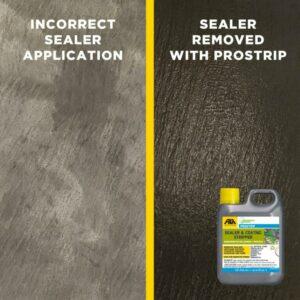
Rust and Metal Stains
Outdoor installations often face a different challenge: rust rings from furniture, tools, or planters. NORUST targets these stains fast. Its non-acidic, gel-like consistency allows it to cling to vertical or uneven surfaces, drawing out rust without harming metal trims or stone finishes.
Simply apply to the stain, leave it to work for about 15 minutes, then wipe it clean. Got heavier rust? Don’t worry, a second pass normally brings the surface right back. It works particularly well in places where metal and stone meet, think patios, pool areas, or busy hotel lobbies, lifting rust without the harshness.
Know the Stone, Match the Solution
FILA’s system works as a complete cycle: clean, protect, and maintain. Use CLEANALL for routine care, PS87, SR95, and NOSPOT for organic stains, DETERDEK and NORUST for mineral and rust residues, and PROSTRIP to remove coatings or buildup.
Even tough, acid-resistant stones need the right kind of care. Using the right cleaner keeps the surface protected and makes your work look its best. And if you’re ever unsure what to use, FILA’s technical team is always happy to help with advice on products and application.
